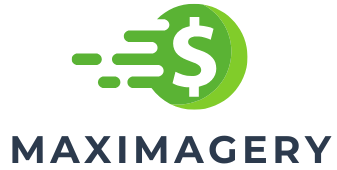Table of Contents
ToggleEvery dollar counts, right? When it comes to purchasing, implementing cost-saving strategies isn’t just smart: it’s essential. Picture the shock of your finance team when you discover that simple changes could lead to significant savings. If you’ve ever seen a cat try to squeeze into a box that’s way too small, you’ll understand, just like that cat, many businesses are clinging to outdated purchasing practices that don’t fit their financial goals. Fortunately, there are numerous tactics that can transform your procurement process from a cash-consuming monster into a lean, efficient machine. Let’s jump into the world of cost-saving strategies and explore how they can revolutionize your purchasing approach.
Understanding the Importance of Cost Saving in Purchasing

Cost-saving strategies in purchasing are crucial in today’s competitive environment. Every business aims to maximize profits while minimizing expenses, and purchasing is often where the most significant savings can occur. When organizations recognize the impact of procurement on their overall financial health, they can carry out strategies that lead to reduced costs. Effective purchasing not only helps in improving profit margins but also enhances cash flow, allowing for reinvestment in other areas of the business. Companies that embrace this mindset often find themselves better positioned to adapt to market fluctuations and economic challenges.
Also, understanding cost savings in purchasing means recognizing opportunities beyond just price reductions. Factors such as supplier reliability, the quality of materials, and long-term relationships can significantly influence overall expenditure. A comprehensive approach will yield deeper insights and foster a more sustainable purchasing strategy.
Evaluating Supplier Relationships
The cornerstone of effective cost savings often lies in supplier relationships. Businesses shouldn’t just look for the lowest prices: they should evaluate the overall value provided by suppliers. A strong supplier partnership can lead to negotiated discounts, favorable payment terms, and even support in inventory management.
Regular communication is paramount. Engaging with suppliers ensures transparency, which can lead to adjustments in pricing structures or exclusive offers tailored to loyal customers. Companies should take the time to assess their supplier base, prioritize those who consistently deliver quality and reliability, and nurture these relationships. This approach not only opens avenues for cost savings but can also lead to improved service levels and product quality.
Implementing Strategic Sourcing
Strategic sourcing goes beyond traditional purchasing. It’s about approaching procurement with a long-term vision in mind. Businesses should analyze their spending habits and identify categories where strategic sourcing can be applied. This means thoroughly understanding the market, evaluating suppliers, and developing sourcing strategies aimed at specific goals.
Organizations adopting a strategic sourcing framework often find themselves able to negotiate better contracts, engage in group buying, and even streamline their overall procurement process. By aligning purchasing strategies with business objectives, companies not only save costs but also position themselves for future growth.
Utilizing Technology and Automation
In an era where technology reigns supreme, leveraging it in purchasing is no longer optional: it’s essential. Tools that automate procurement processes can lead to significant cost savings by minimizing manual errors, streamlining operations, and reducing the time spent on admin tasks. Companies can carry out procurement software solutions that not only track expenses but also analyze spending patterns.
With the right technology, businesses can gain insights into supplier performance, identify cost-saving opportunities, and even automate restocking when inventory levels drop. Automation allows procurement teams to focus on strategic rather than tactical tasks, enabling them to drive efficiency across the organization.
Leveraging Volume Discounts and Bulk Purchases
Volume discounts can be a game-changer in the realm of cost savings. Many suppliers offer price reductions for bulk purchases, and savvy organizations should take advantage of this strategy. Buying in larger quantities often leads to lower unit costs, which can significantly impact the overall budget.
But, businesses must also ensure that they aren’t overstocking items that might perish or go out of fashion. A careful analysis of inventory turnover and demand planning is essential to make the most out of volume discounts. By integrating timely purchasing strategies with market needs, organizations can effectively harness the financial benefits of bulk buying.
Conducting Regular Market Analysis
Market analysis is an indispensable tool in any purchasing strategy. Understanding current market trends, pricing fluctuations, and economic factors can help businesses make informed purchasing decisions. Regularly analyzing the market enables companies to adjust their purchasing strategies proactively rather than reactively.
Staying informed about competitor pricing and alternatives allows businesses to negotiate better terms with suppliers. Also, frequent analysis can help identify emerging suppliers who might offer more competitive pricing or innovative solutions. Consistent market evaluations are essential to remain agile and adapt to the ever-changing landscape.
Fostering a Culture of Cost Efficiency
Creating a culture centered around cost efficiency within an organization requires effort and commitment. Employees at every level should be encouraged to seek out ways to save costs and reduce waste. Training programs can be employed to educate team members about supply management and procurement best practices, empowering them to contribute to the overall financial health of the company.
Recognizing and rewarding cost-saving initiatives can further solidify this culture. When employees feel their contributions matter, they’re more likely to engage in innovative thinking that leads to savings. An organization that prioritizes cost efficiency can not only respond to economic downturns quicker but can also improve its market competitiveness.





